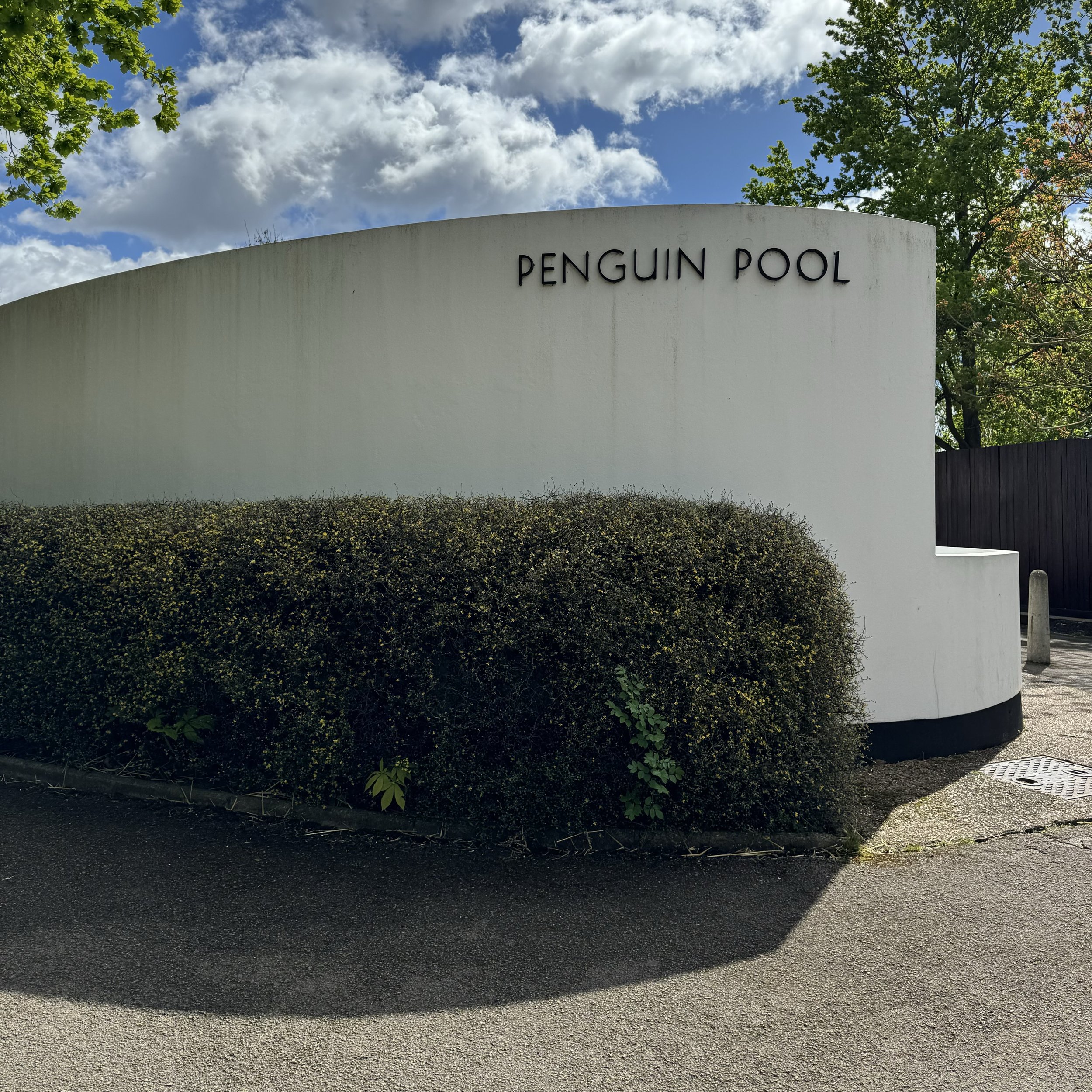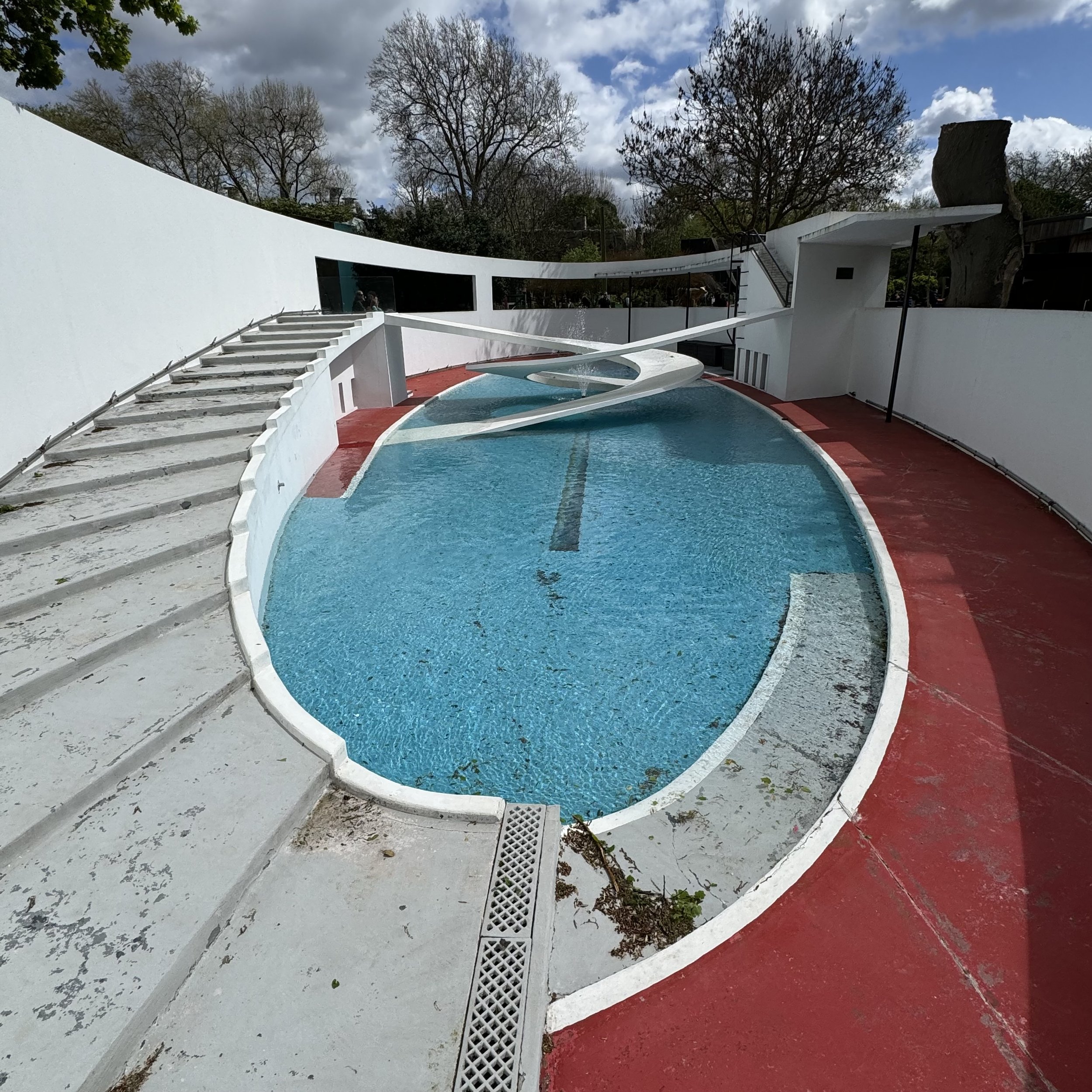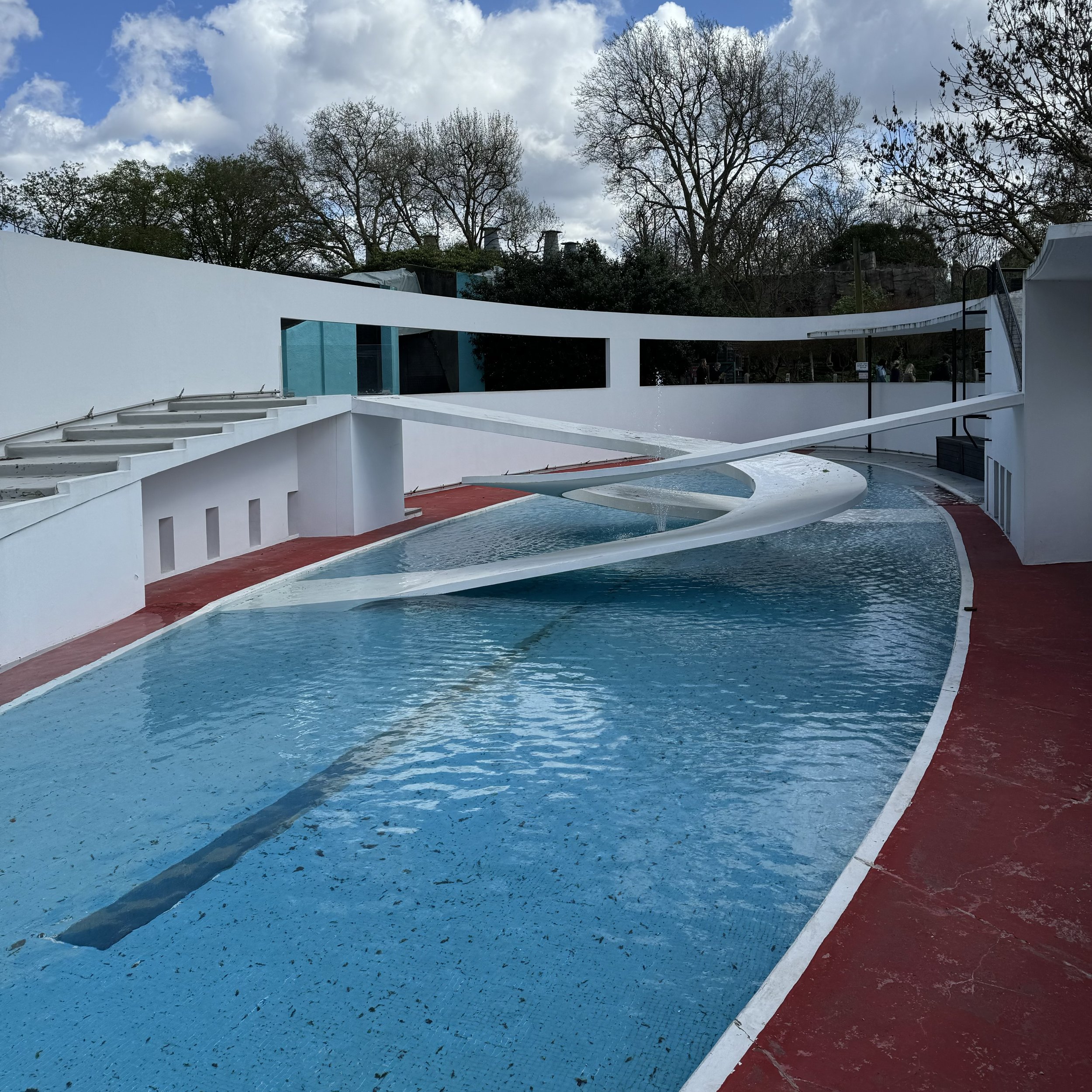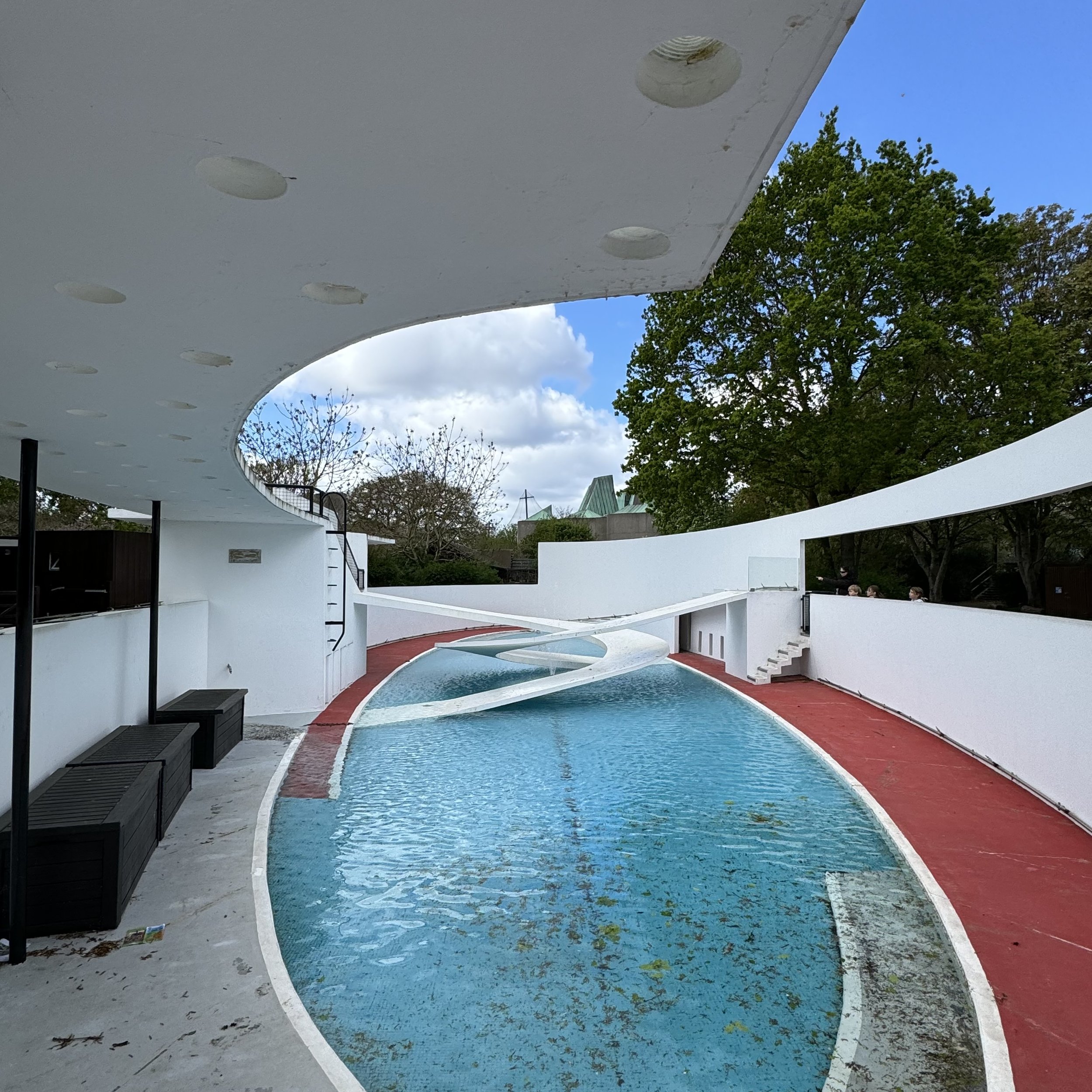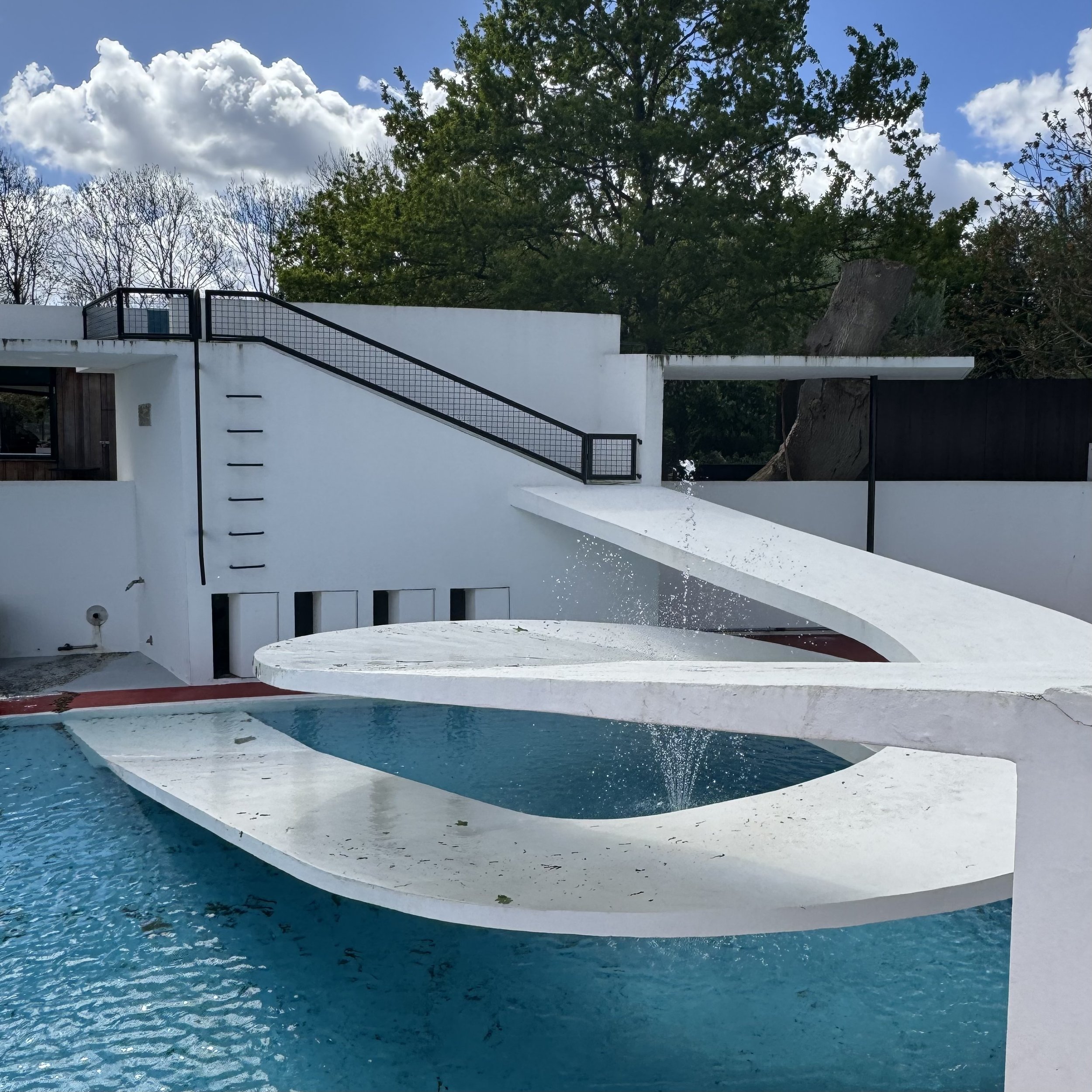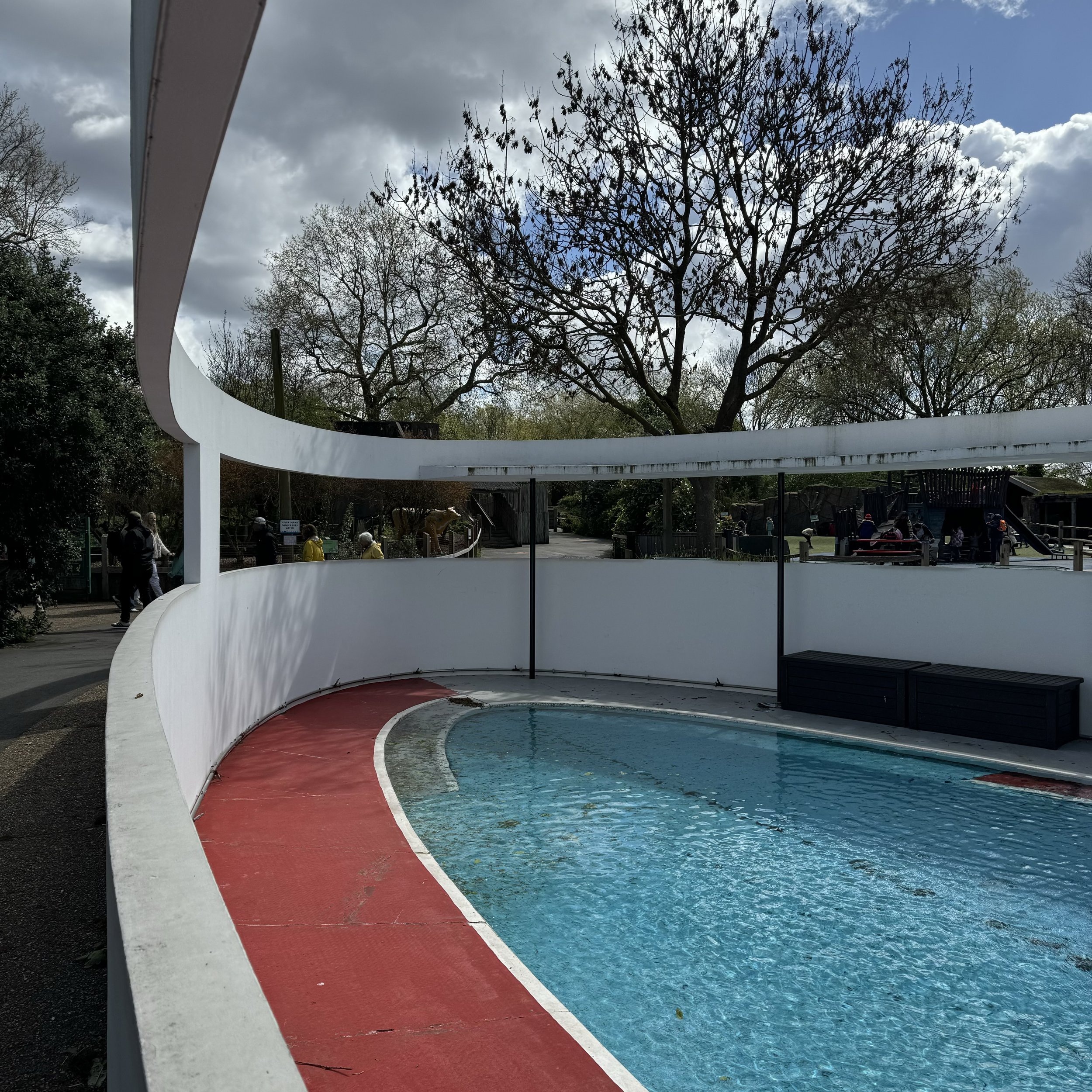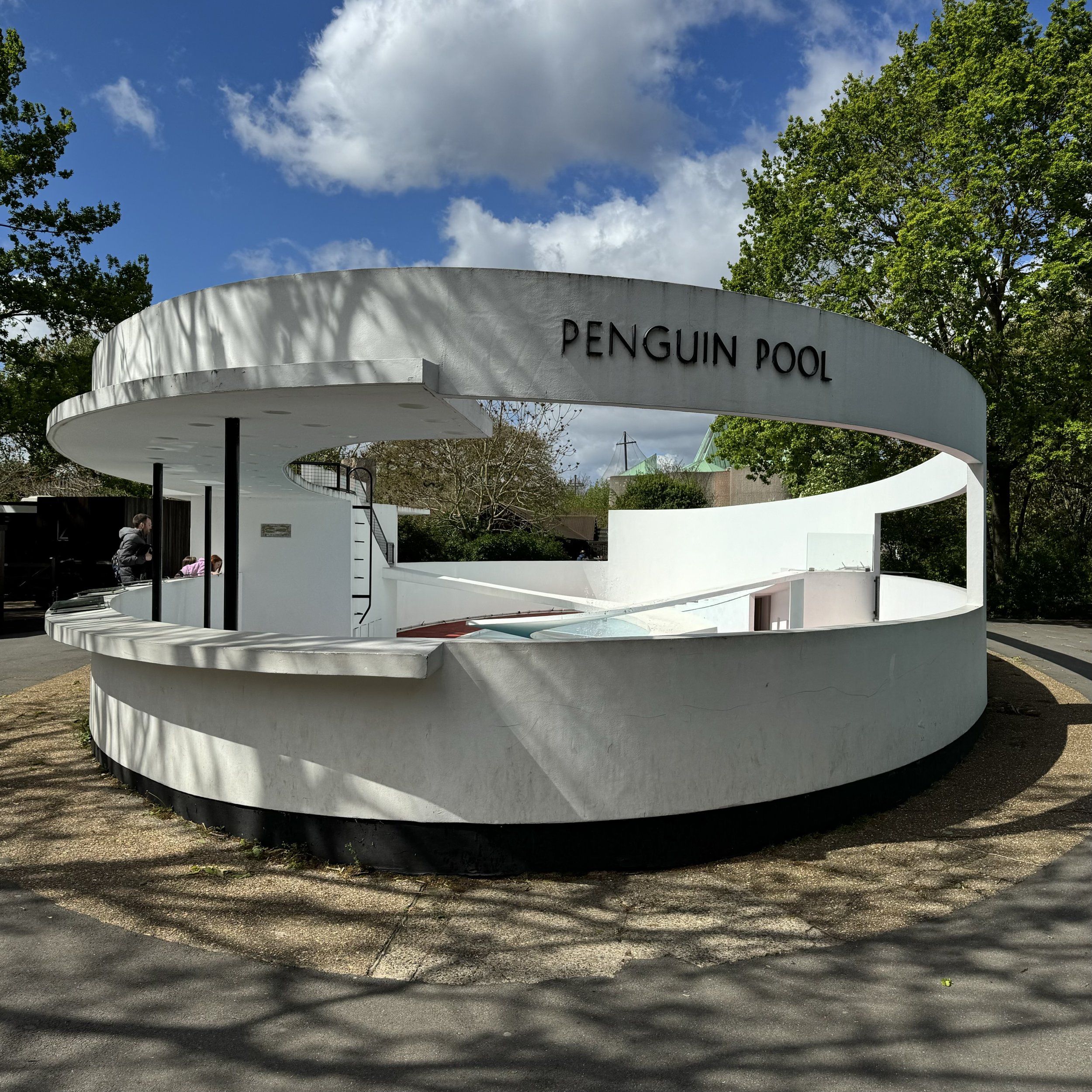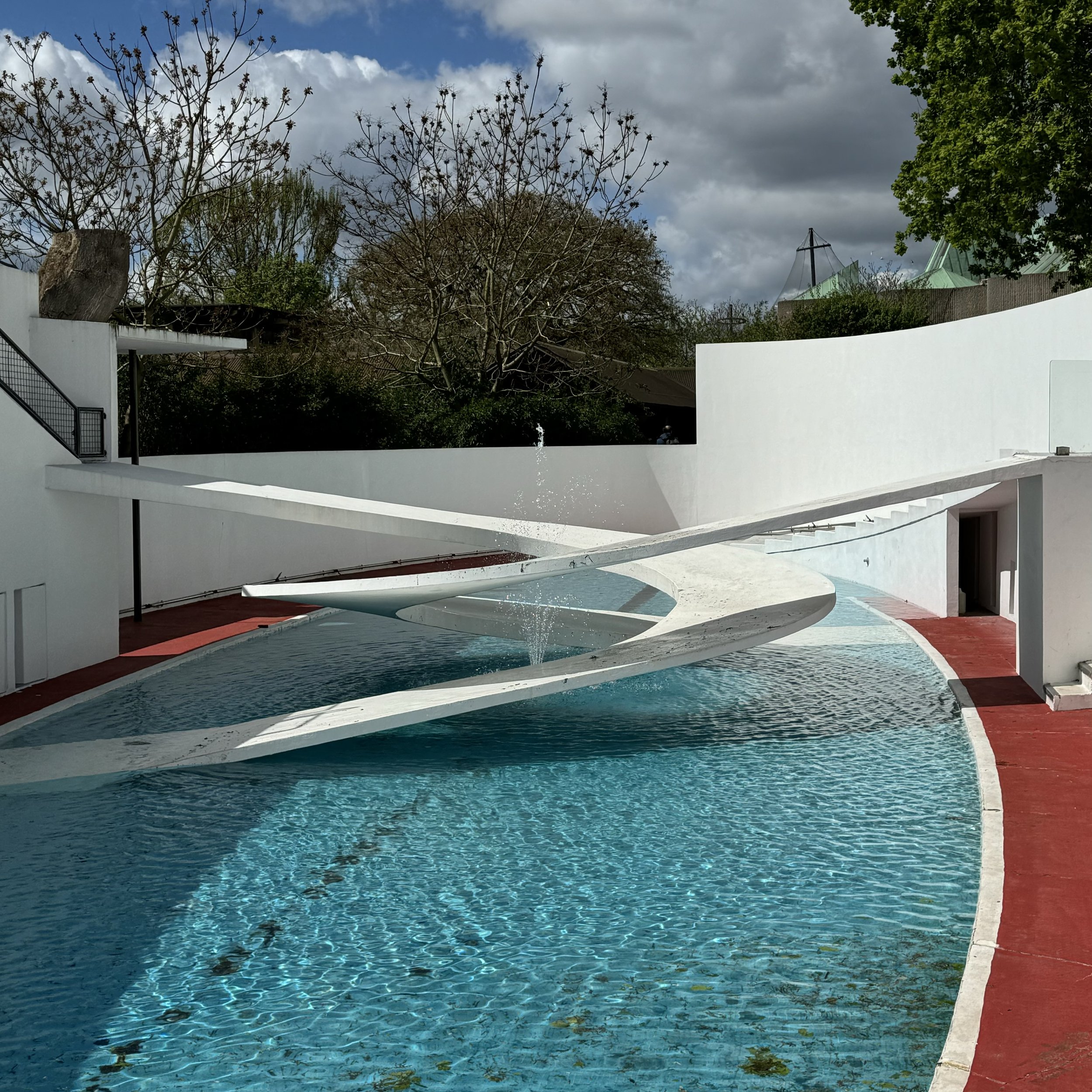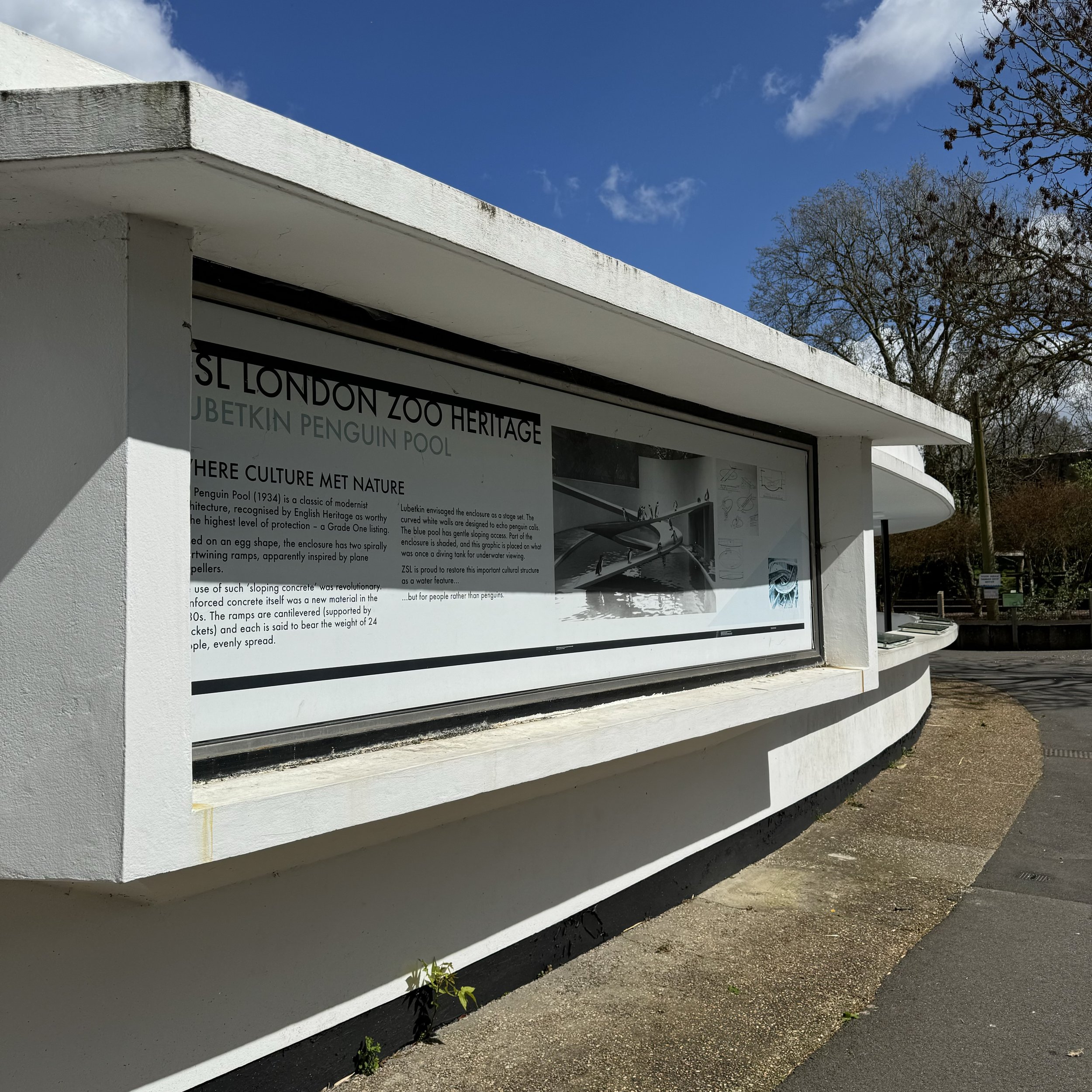Penguin Pool (1934)
Berthold Lubetkin (1901-1990) & Tecton
Penguin Pool, 1934
Concrete & steel
40 feet wide x 100 feet long (approx.)
London Zoo, Regent’s Park
Is architecture art? Well, when you evict the tenants and give it a Grade I listing, effectively reducing it to a piece of outdoor sculpture, then yes. Yes it is.
The Penguin Pool, designed by Berthold Lubetkin, was constructed in 1934 and was the home of the London Zoo penguins for seventy years until modern zoological standards, and a bad case of bumblefoot courtesy of added anti-slip surfaces for the zookeepers, necessitated a re-think. ZSL’s penguins now swim, frolick and play in the vastly more appropriate environment at Penguin Beach (isn’t everyone happier on a beach?) while Lubetkin’s icon of British modernist architecture sits empty, stoic and untouched, like an iceberg to be avoided. Except it still draws a crowd. Because of course it does. I mean, have you seen it?
The pool itself is a rather shallow affair based on the shape of an egg. A tall, elongated egg. Spanning the narrow middle are two interlocking, cast-in-place concrete spiral ramps that appear to float above the water. Each is 14 metres long and can supposedly support the weight of 24 average adults spaced evenly apart, or one superstar like Harry Styles stripping off in a music video. The team that made it possible was led by Ove Arup, who would later become famous for the Sydney Opera House.
The engineering wizardry, groundbreaking at the time, is justifiably given prominence while the functional bits have been carefully hidden into the abstract modernist structure that rings the enclosure and doubles as the visitor viewing wall. Even without the penguins it’s a fascinating sight. Cutouts in the curved concrete exterior draw your eye from a distance. Curious windows that make you want to peek over the edge and see penguins playing inside. The original Art Deco ‘Penguin Pool’ signs have remained in place, and I suspect many visitors are let down daily once they get close enough to see that it is devoid of life. But it is still very much vibrant inside.
The white cantilever ramps visually pop against the sky blue pool, which is wrapped with a crimson red ramp that edges the enclosure. Even on an overcast day the red, white and blue palette will trigger daydreams about tropical poolside holidays. On a sunny day, dark shadows are cast into the vertical openings of the now-empty penguin nests, and I wonder what it would have been like to see a stream of penguins cascade onto the ramps. The organisation of the entire structure has been designed like a stage set for a whimsical Busby Berkeley production overflowing with well-dressed waddlers.
I’m pretty sure I visited when it was still inhabited by the penguins, although I can’t recall the experience nor find any photo evidence. Maybe I never did? Maybe my fascination with penguins and love of architecture have conspired to create a memory that never actually existed. In my head I see them playfully stumbling down the ramp to a vaudeville soundtrack, but on the day I visited for this article it’s almost entirely silent. The only sounds are the droplets of the fountain as they disrupt the rippling effect from the cool breeze blowing across the water.
Having seen how adapted the current occupants are to Penguin Beach it’s easy enough to understand why Lubetkin’s pool has been vacated. It’s too small, too shallow, and there’s simply not enough “behind the scenes” hiding places for the animals. Those poor penguins would be always on display. Like a good old fashion zoo would have wanted, but modern audiences no longer expect. Regardless, it is a visually stunning work of art. A case of function following form that was long ago thrown out as a valid architectural approach, but I’m so thankful that it exists.
Would I love this as much if it had been designed for another animal and is it worth paying £27 (adult, off-peak) to see it? Probably not, but it’s a fantastic legacy that sits proud amongst the 15,000 animals and daily zookeeper talks at Penguin Beach that you also get for the price of admission.
That’s why I like it.
“One can’t be angry when one looks at a Penguin.” - John Ruskin
Additional reading:
Engineering the Penguin Pool (V&A article)
Revisit: Penguin Pool (Architectural Review)
Penguins (1939) (YouTube video) — British Pathé film at London Zoo
Harry Styles — As It Was (YouTube video) — the penguin pool first appears around 1’10”
Previously, on Why I Like It:
Apr — V&A Rotunda Chandelier (2001), Dale Chihuly
Mar — Brass Snooker Chalk (2023), George Richardson
Feb — The Identi-Kit Man (1962), Derek Boshier

